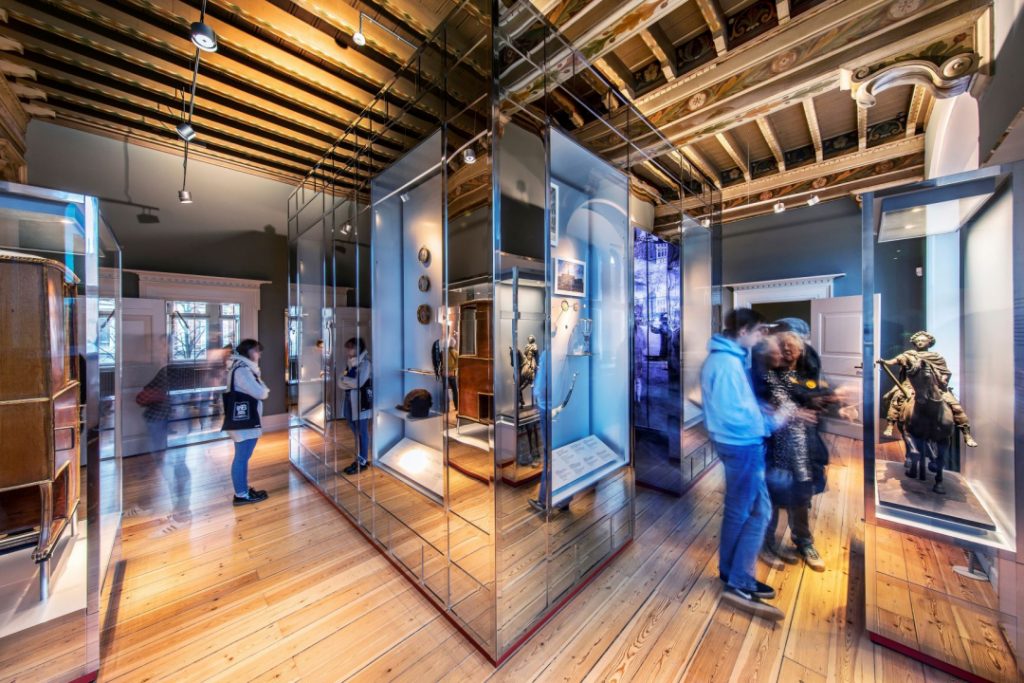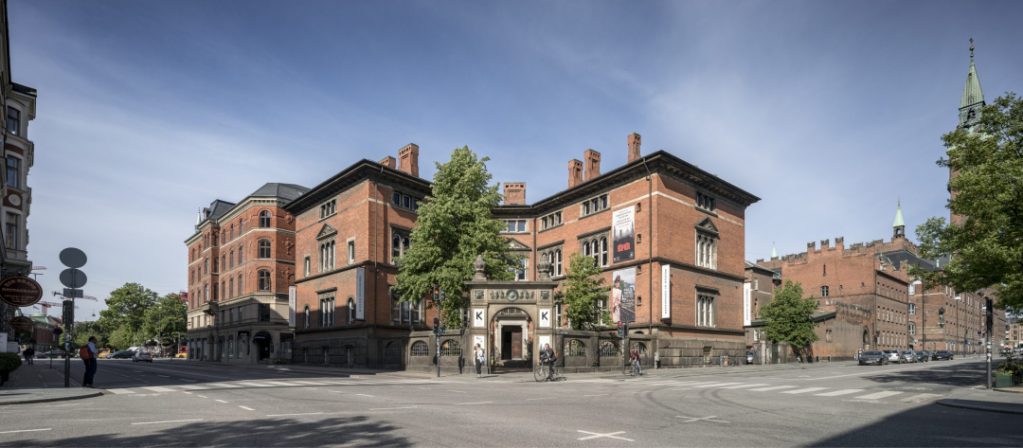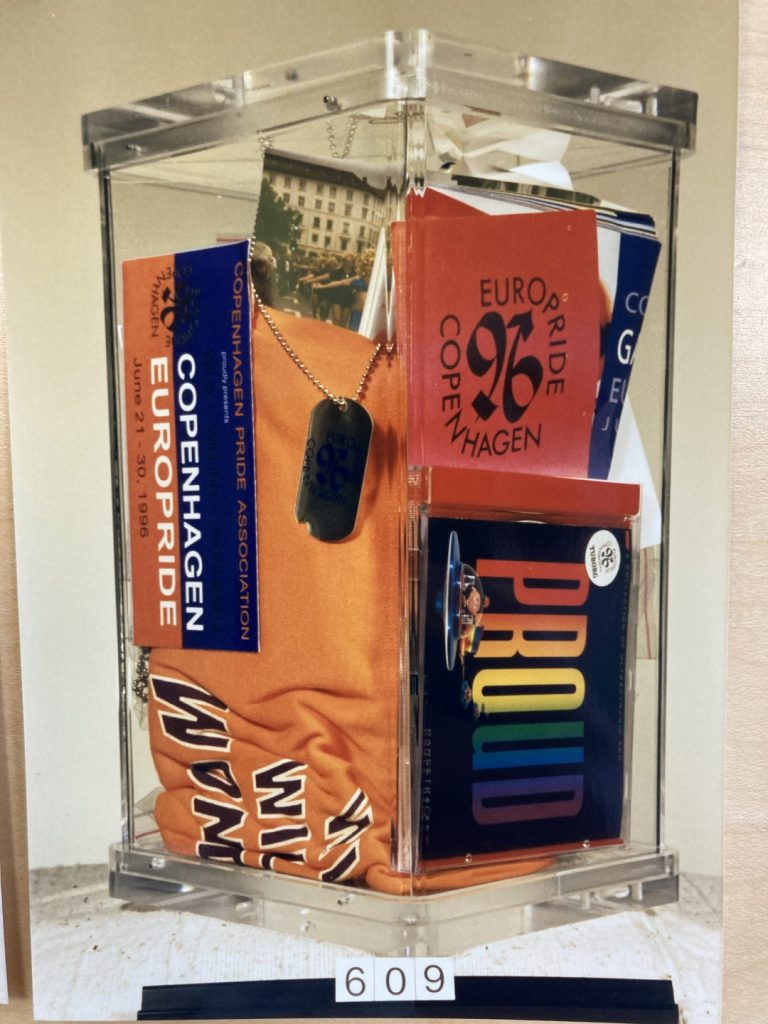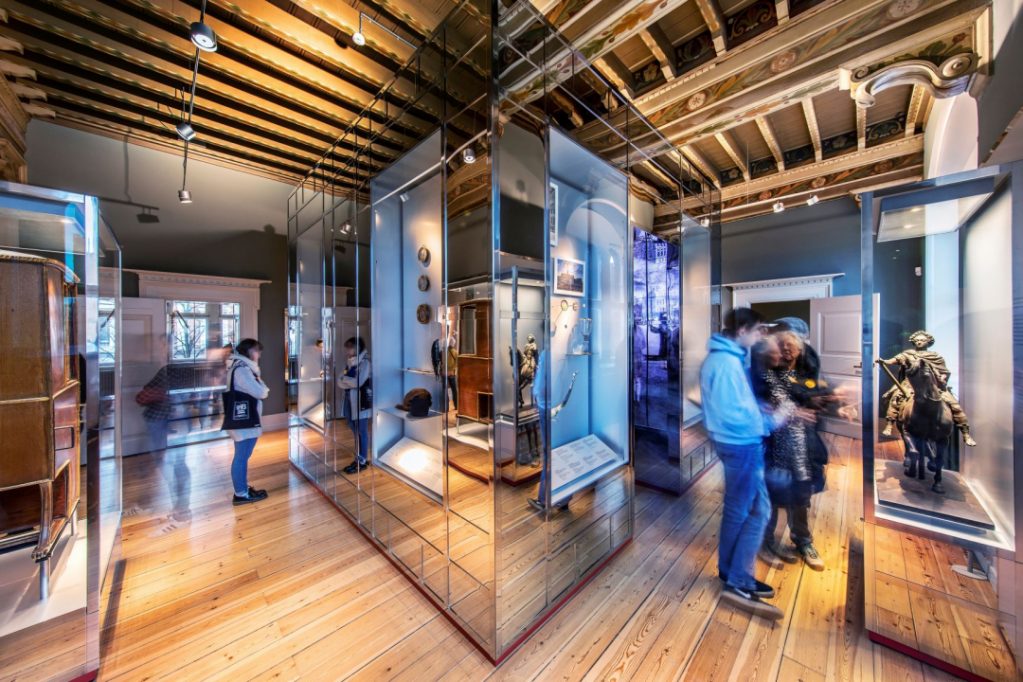
Photo by Museum of Copenhagen
Museum of Copenhagen
City history museums have been a thing for me lately. I’ve been very impressed over the past few years that many have expanded and have started to include histories covering housing, social, and workers’ rights.
The Museum of Copenhagen is housed in a three-story brick building from the 1900s. It’s been around for over 120 years, and the collection has expanded up to today. On the ground floor, there is a wonderful cafe and a gift shop. There is an excellent outdoor courtyard in the front of the building to enjoy on a nice day.

On the ground floor is the special exhibition space. While we were there is was a Time Capsule-Copenhagen in the Nineties. An exciting collection of a time when the Cold War had just ended, the city was going through a cultural shift to a younger generation, and a contentious urban rebuilding of the Vesterbro area of the city. In 1996, Copenhagen hosted the European Captial of Culture. Part of that lives in 500 time capsules that residents sent in to preserve that moment in time. From CDs, pool balls, and even used syringes, these were the things that 90s Copenhagens wanted folks to remember.

As the Museum puts it:
Experience the Danish capital between “Wonderful Copenhagen” and the “most liveable city” accolade. Travel twenty-six years back in time to the 90s, when Copenhagen was run-down and populated by students and old ladies in large apartments. A time when people partied against the tragic background of the HIV/AIDS epidemic, when film had to be Danish Dogme, and buffalo shoes and Fly sunglasses were de rigueur on the fashion front.
Time Capsules: Copenhagen in the Nineties
As you head up the stairs to the first and second floors, time marches on. On the first floor, you walk through the historical building of the city and port from 12,000 BCE to the 1850s. Some of the most powerful displays are the accounts, both visual and audio, of the city’s battles with the Black Death, Cholera, and tragic fires.

The second and top floor delves into the modern city from 1850 to today. That’s when to start to get into the debate of social and housing rights. Powerful stuff. The housing debate is one of the strongest. Like many other large cities, Copenhagen faced the problem of modernizing the city that ran smack dab into the demand of working people and students to preserve the cultural character of city neighborhoods and ensure affordable housing. Great coverage of the squatters movement which led to the creation of Freetown Christiana.
You can learn a lot here. And the great thing is that the museum opens a little earlier than some of the others in the area. So you can get there when the masses are still asleep and still have time to visit more places.